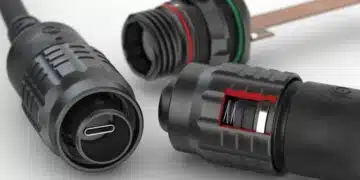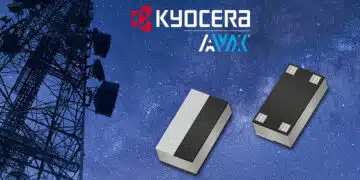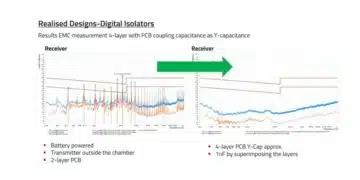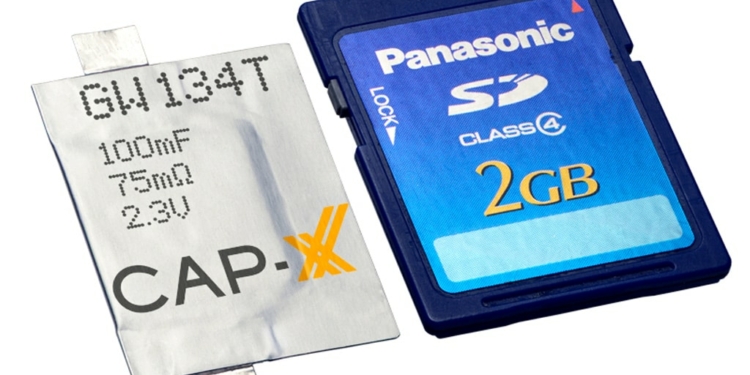source: Sensors mag article
Wireless sensor applications usually have a low duty cycle with a high peak power requirement to periodically or sporadically gather and transmit data drawing very low average power. This makes them ideal to be powered from an energy harvester coupled with a supercapacitor.
Wireless sensors are becoming ubiquitous. They are used in applications ranging from HVAC, industrial control, condition monitoring, security monitoring, and location tracking. Providing power to these sensors can be a problem – it is too expensive to wire power to them, and batteries require replacement and disposal. The environment on the other hand, can provide effectively infinite energy but at very low power. These sensor applications usually have a low duty cycle with a high peak power requirement to periodically or sporadically gather and transmit data drawing very low average power. This makes them ideal to be powered from an energy harvester coupled with a supercapacitor. The energy harvester supplies a power management IC which charges the supercapacitor at very low power, and the supercapacitor provides the peak power burst for the sensor to collect and transmit data. Some typical applications include:
- Sensors reporting over the cloud in the Internet of things.
- Solar cells to power sensors reporting temperature & humidity for HVAC, light levels to control lighting, movement detectors to determine if lights should be switched off / on.
- Vibration transducers (micro-generator or piezo-electric) to power sensors reporting vibration spectra for condition monitoring of rotating machines, for condition monitoring and location tracking of railway rolling stock, location tracking of containers, monitoring stress in structures such as bridges and dams, monitoring vibration and stress in airframes.
- RF for rapid wireless charging of a supercapacitor that then enables encrypted card transactions, monitoring reporting user data in wearables.
Figure 1 shows the typical power architecture using an energy harvester and supercapacitor.
Supercapacitors, which can deliver high power due to their low ESR, have high C to supply sufficient energy to support the data capture and transmission for its duration, have “unlimited” cycle life, and can be charged at very low current are the perfect power buffer between the energy harvester and sensor. Factors to consider when selecting your supercapacitor include:
- How much energy is required to support the data collection and transmission?
- What is the peak transmit power?
- Factors 1 and 2 together will determine the minimum capacitance and maximum Equivalent Series Resistance (ESR) for the supercapacitor. Many engineers select C = 2E/(V2init – V2final), where E is the energy required for the transmit pulse and Vinit and Vfinal are the initial and final voltages of the supercapacitor. However, this calculation has implicitly assumed that supercapacitor ESR = 0. The supercapacitor voltage drop will be ILOAD x ESR + ILOAD x Duration/C where Duration is the duration of the load pulse. This formula is accurate for the simple case of constant current during data capture and transmission. In practice, more accurate modelling may be necessary.
- What is the leakage current? This must be << charging current provided by the energy harvester and charging IC.
- How much space do you have? Many applications, such as building sensors, wearables, require a slim, unobtrusive and elegant form-factor. In these cases, CAP-XX’s thin prismatic supercapacitor range meets the need. Where space is not constrained, lower cost CAP-XX cans can be used.
- At what voltage does the sensor and transmitter operate? If it is less than 3V then you can use a single cell supercapacitor. CAP-XX will soon release 3V prismatic cells, 3V cans are currently available. If a higher voltage is required, then use a dual cell supercapacitor module for up to 5.5V. CAP-XX prismatic dual cell modules have the 2 cells matched by capacitance so they have roughly equal voltages when charged. A low current active balance circuit is required to maintain cell balance.
A range of ICs have been released to charge supercapacitors from energy harvesters. In selecting your IC you should consider the characteristics of your energy harvesting transducer (solar, micro-generator, piezo-electric, RF or thermal), the minimum voltage the IC requires to start, if the IC has peak power tracking and the method it uses, min and max power levels and efficiency at those levels.
An ecosystem has developed, comprising of energy harvesters, charging ICs and supercapacitors to enable energy from the environment to “indefinitely” power wireless sensors in a wide variety of applications.
featured image credit: CapXX

































